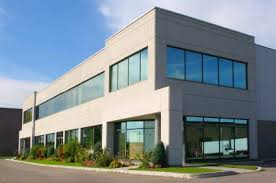This New Financial Ratio Has Replaced the Debt Service Coverage Ratio
For over 50 years commercial real estate lenders determined the maximum size of their commercial mortgage loans using the debt service coverage ratio. For example, a commercial lender might insist that the Net Operating Income (NOI) of the property be at least 125% of the proposed annual debt service (loan payments).
But then, in the mid-2000's, a problem started to develop. Bonds investors were ravenous for commercial mortgage-backed securities, driving yields way down. As a result, commercial property owners could regularly obtain long-term, fixed rate conduit loans in the range of 6% to 6.75%.
At the same time, dozens of conduits were locked in a bitter battle to win conduit loan business. Each promised to advance more dollars than the other. Loan-to-value ratio's crept up from 70% to 75% and then to 80% and then up to 82%! Commercial property investors could achieve a historically huge amount of leverage, while locking in a long-term, fixed-rate loan at a very attractive rate.
Not surprisingly, the demand for standard commercial real estate (the four basic food groups - multifamily, office, retail, industrial) soared. Cap rates plummeted, and prices bubbled-up to sky-high levels.
 When the bubble popped, conduit lenders found that many of their loans were significantly upside down. The borrowers owed far more than the properties were worth.The lenders swore to never let this happen again. The CMBS industry therefore adopted a new financial ratio - the Debt Yield Ratio - to determine the maximum size of their commercial real estate loans.
When the bubble popped, conduit lenders found that many of their loans were significantly upside down. The borrowers owed far more than the properties were worth.The lenders swore to never let this happen again. The CMBS industry therefore adopted a new financial ratio - the Debt Yield Ratio - to determine the maximum size of their commercial real estate loans.
The Debt Yield Ratio is defined as the Net Operating Income (NOI) divided by the first mortgage debt (loan) amount, times 100%. For example, let's say that a commercial property has a NOI of $437,000 per year, and some conduit lender has been asked to make a new first mortgage loan in the amount of $6,000,000. Four-hundred thirty-seven thousand dollars divided by $6,000,000 is .073. Multiplied by 100% produces a Debt Yield Ratio of 7.3%. What this means is that the conduit lender would enjoy a 7.3% cash-on-cash return on its money if it foreclosed on the commercial property on Day One.
Please notice that this ratio does not even look at the cap rate used to value the property. It does not consider the interest rate on the commercial lender's loan, nor does it factor in the amortization of the lender's loan; e.g., 20 years versus 25 years. The only factor that the Debt Yield Ratio considers is how large of a loan the commercial lender is advancing compared to the property's NOI. This is intentional. Commercial lenders and CMBS investors want to make sure that low interest rates, low caps rates, and high leverage never again push real estate valuations to sky-high levels.
So what is an acceptable Debt Yield Ratio? Ten percent - this is the lowest number that most conduit lenders are using to determine the maximum size of their advances. In our example above, the subject commercial property generated a NOI of $437,000. Four-hundred thirty-seven dollars divided by 0.10 (10% expressed as a decimal) would suggest a maximum loan amount of $4,370,000.
Typically a Debt Yield Ratio of 10% produces a loan-to-value ratio between 63% and 70%, the maximum level of leverage that the current CMBS B-piece buyers are requiring.
It is the money center banks and investment banks originating fixed-rate, conduit-style commercial loans that are using the new Debt Yield Ratio. Commercial banks, lending for their own portfolio, and most other commercial lenders have not yet adopted the Debt Yield Ratio.
You will notice in my definition of the Debt Yield Ratio that I used as the "debt" just the first mortgage debt. The reason why I threw in the words first mortgage is because more and more new conduit deals involve a mezzanine loan at the time of origination. The existence of a sizable mezzanine loan behind the first mortgage does NOT affect the size of the conduit's new first mortgage, at least as far as this ratio is concerned.
Will conduit's ever accept a Debt Yield ratio of less than 10.0%? Yes, if the property is very attractive, and it is located in a primary market, like Washington, DC; New York; Boston; or Los Angeles - an area where cap rates are exceedingly low (4.5% to 5%) - a conduit lender might consider a Debt Yield as low as 9.0%.
Need a commercial mortgage loan right now? You can apply to 750 commercial lenders - including several dozen conduit lenders - in just four minutes using C-Loans.com And C-Loans is free!



